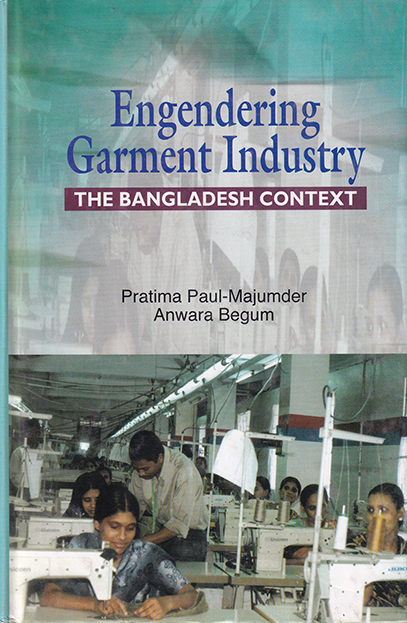- Shop
- Engendering Garment Industry: The Bangladesh Context
Engendering Garment Industry: The Bangladesh Context
https://uplbooks.com/shop/9789840517619-engendering-garment-industry-the-bangladesh-context-6639 https://uplbooks.com/web/image/product.template/6639/image_1920?unique=3d813f3
| Language: English |
Tags :
Book Info
The Readymade Garment (RMG) Industry occupies a dominant position in the export manufacturing sector of Bangladesh. Most of the workers employed in this industry are women, mainly to exploit the comparative advantages they provide in terms of cheap labour, low bargaining power and their docility etc. It follows that there will be substantial gender differentiated socio-economic impacts in this export oriented manufacturing sector. The main objective of this book is to identify these gender differentiated socio-economic impacts and to measure the extent to which these impacts on the garment industry in Bangladesh. The analysis in this book is based on the findings of a number of surveys conducted by BIDS. It finds women's employment in the export oriented garment industry of Bangladesh has narrowed down the gender gap in many spheres like employment, income, social prestige, control over income, decision making etc. At the same time women's employment widens the gender gap in other spheres such as health, social security etc. Tension and ambivalence are also more prevalent among female workers than among male workers. It also finds that occupational segregation and gender discrimination in wage rates were wide. Women cannot reap the full potential of their employment if these gender imbalances are not addressed. Most of the policy recommendations in this study aimed at eliminating or minimising the gender imbalances arising from women's employment in the export oriented garment industries.

Pratima Paul Majumder
Dr. Pratima Paul-Majumder's research work was groundbreaking in a wide range of subjects from sericulture to economics of slums and squatter settlement to garment industry and gender issues. Some of her important publications are: Women in Manufacturing Industries of Dhaka City (ILO/ARTEP, New Delhi), Women, Work and Home (BIDS, Dhaka), and A Study on Urban Poverty: Its Nature and Extent (Arani Publications, Dhaka).

Anwara Begum
Anwara Begum, PhD, Research Director at the Bangladesh Institute of Development Studies, specializes in Urbanization and Migration. With over 35 years of research, she has contributed to significant reports like the first Millennium Development Goals Report and PRSP. Her expertise includes urbanization, gender, education, and poverty. She has numerous publications and citations and was recently awarded the Global MTC award for excellence in education.



